A Columbia River Basalt Group Aquifer in Sustained Drought: Insight from Geophysical Methods
Abstract
:1. Introduction
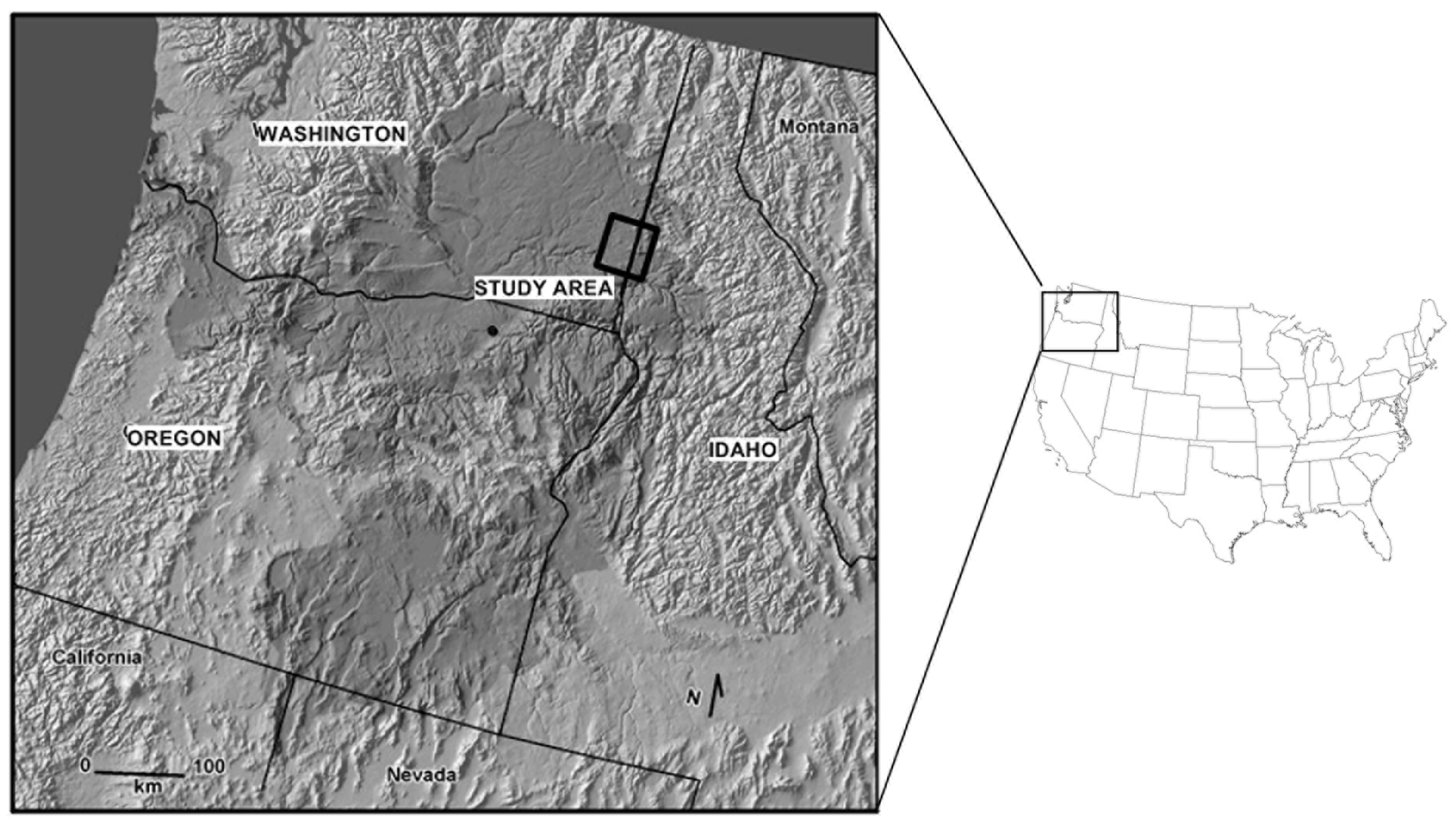
1.1. CRBG Aquifers
1.2. Study Area
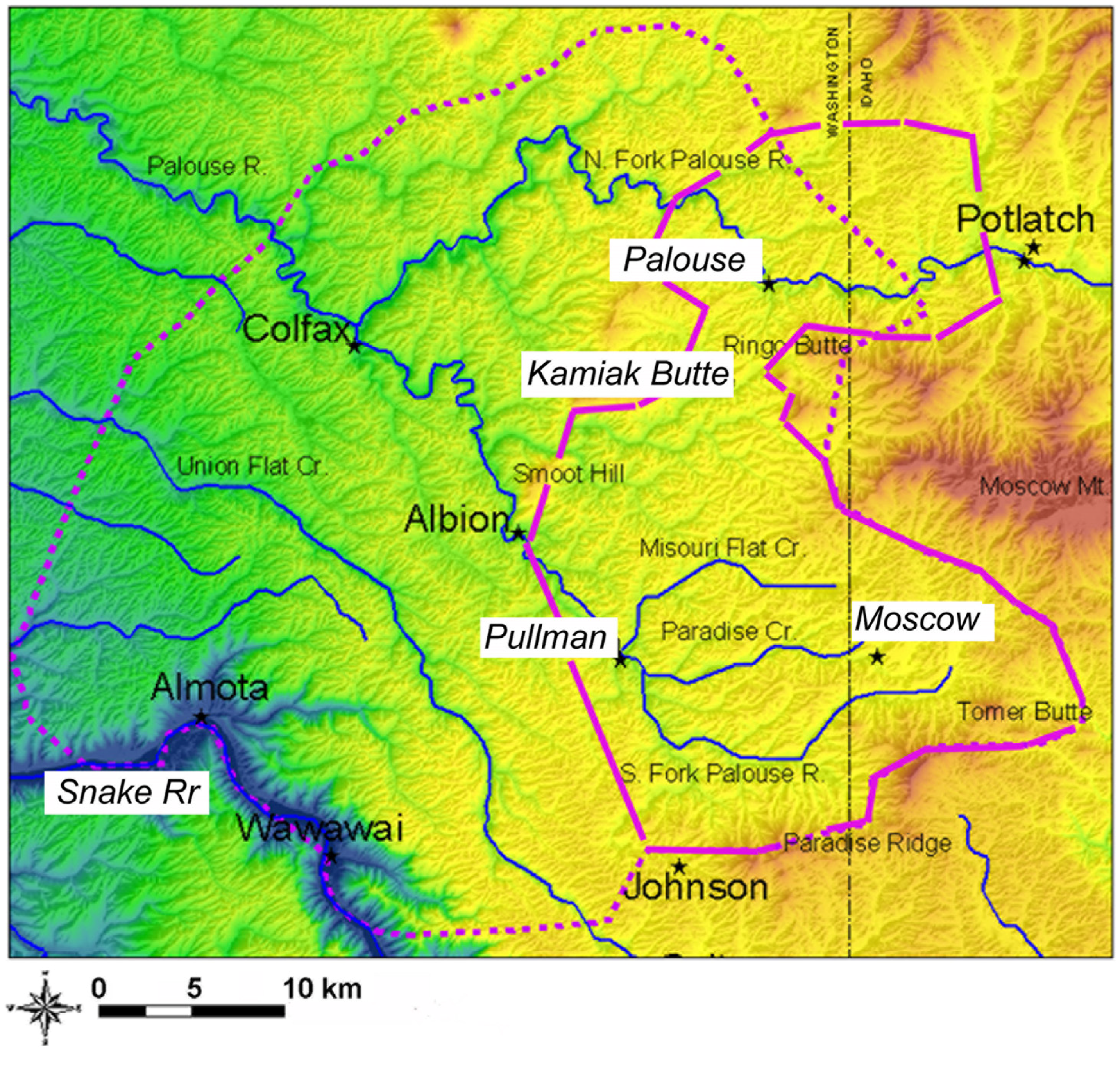
1.3. The Moscow-Pullman Basin
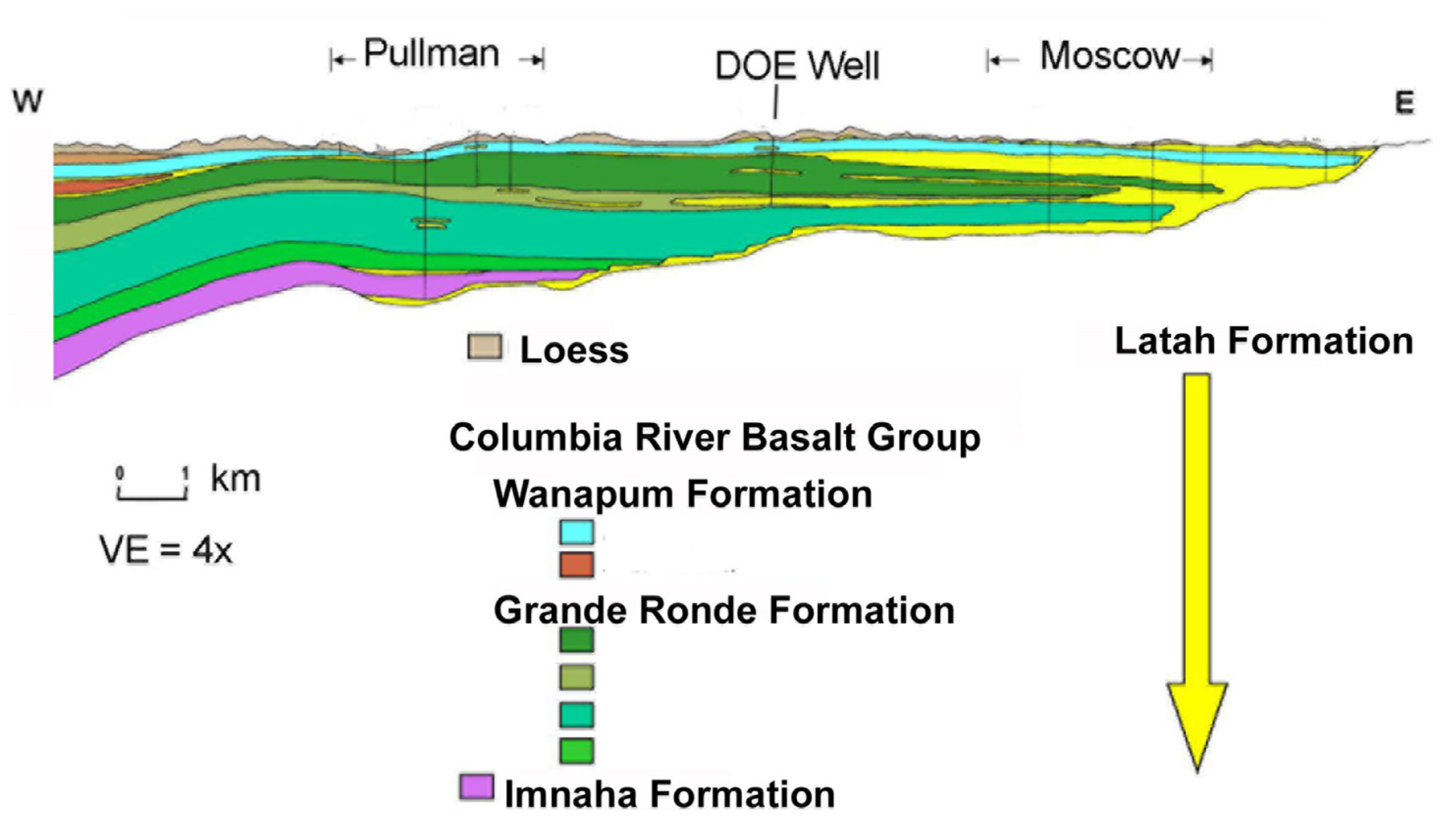
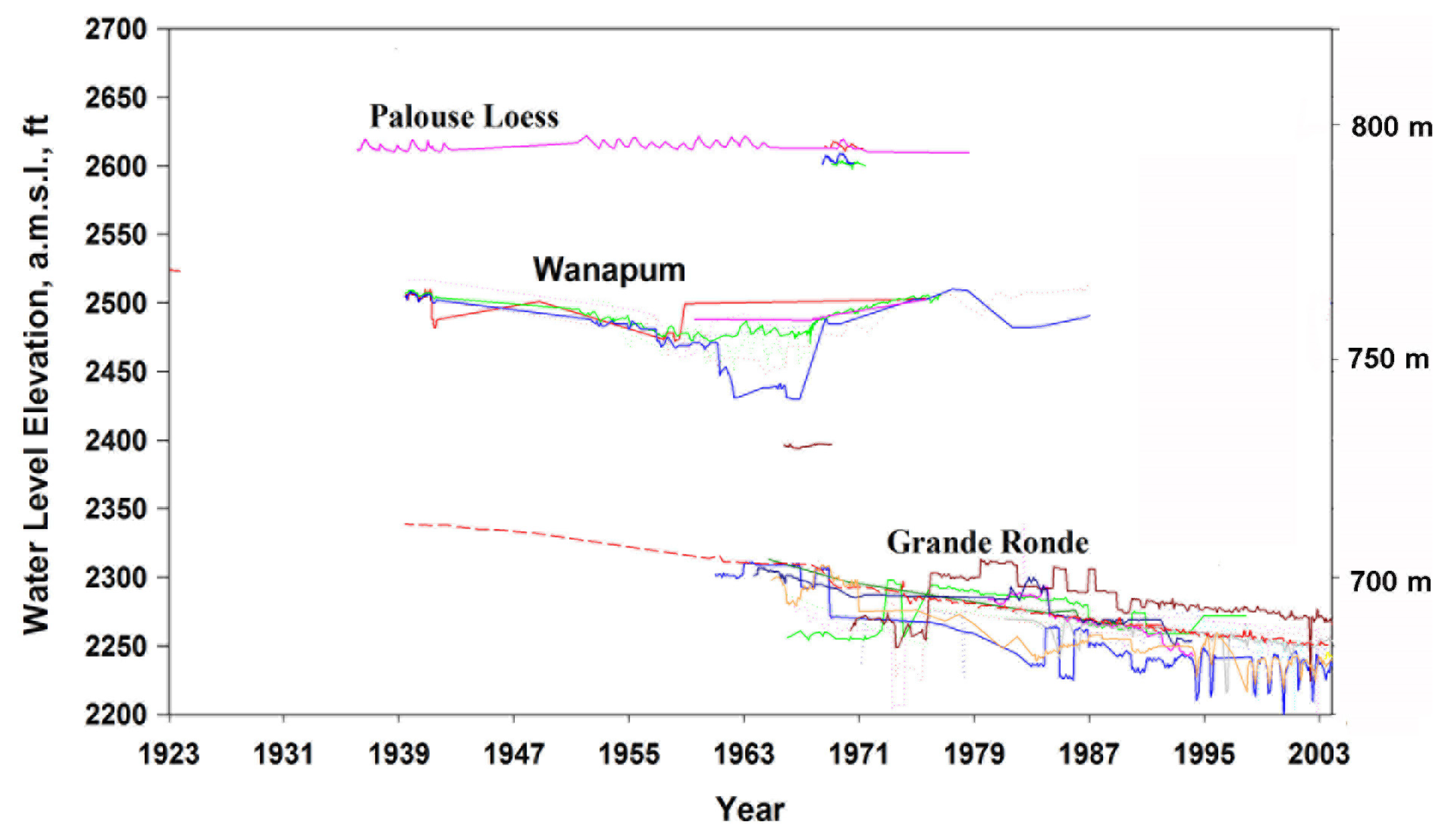
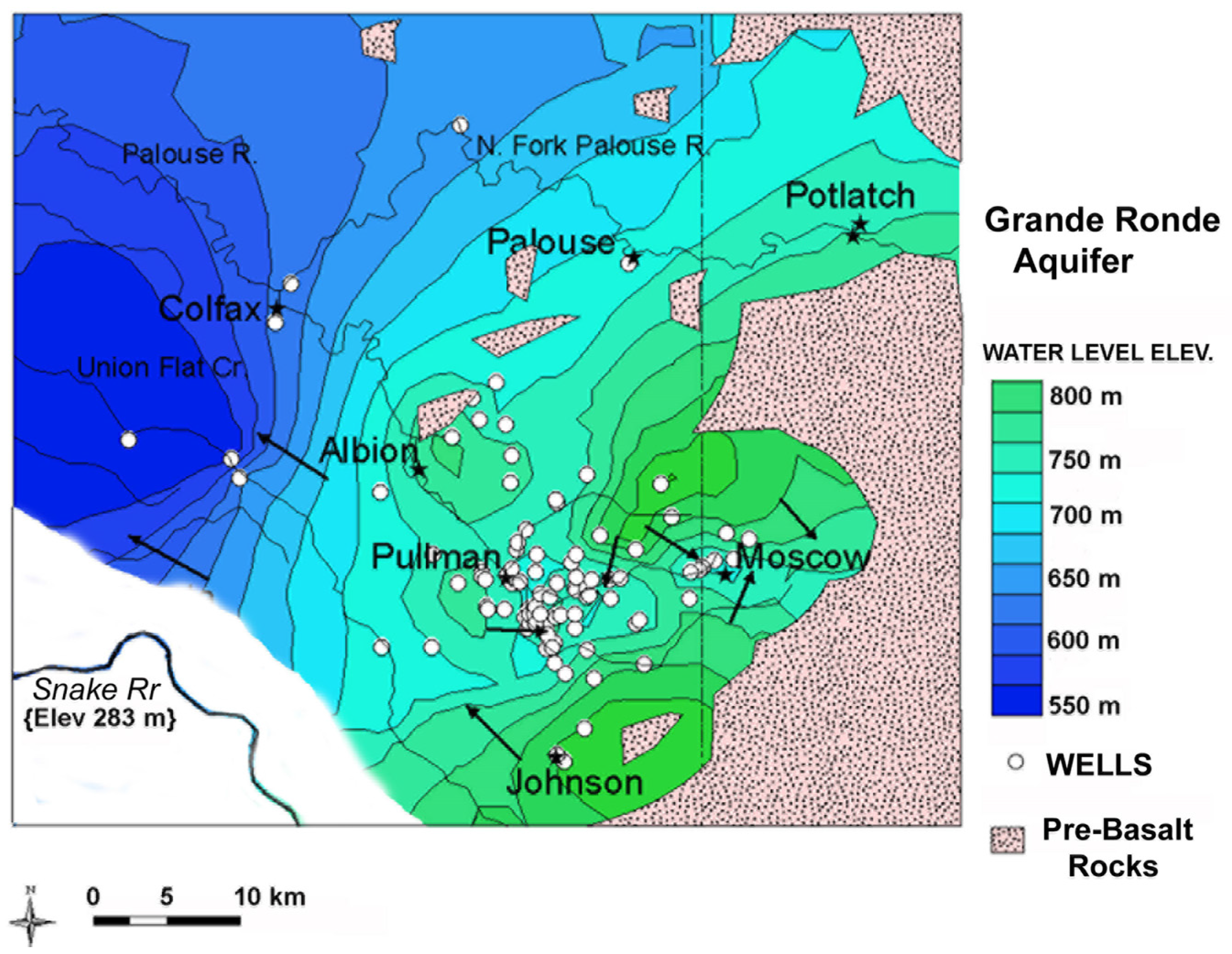
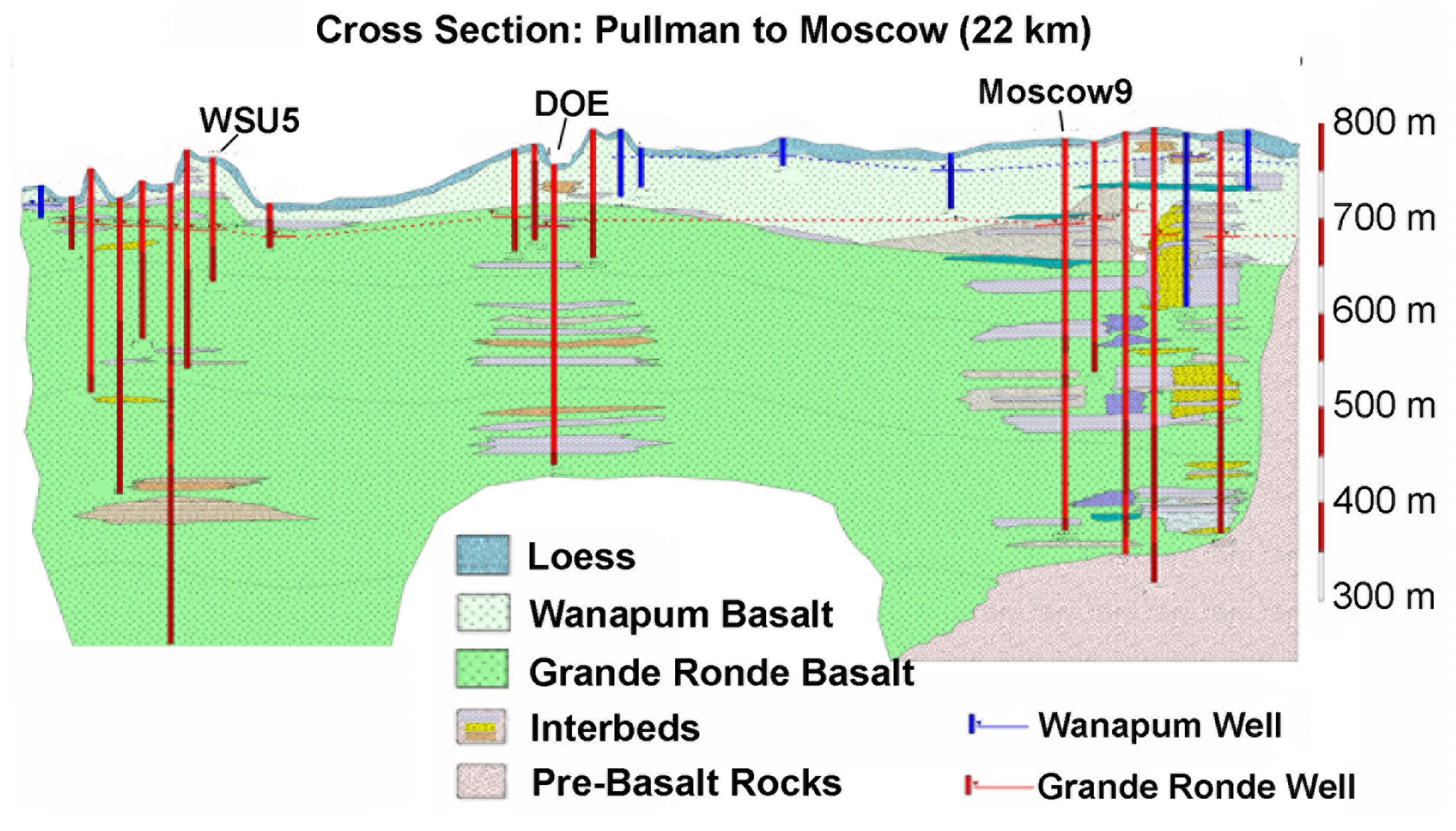
1.4. The Primary Aquifer System
2. Methods
2.1. Porosity of the Aquifer System
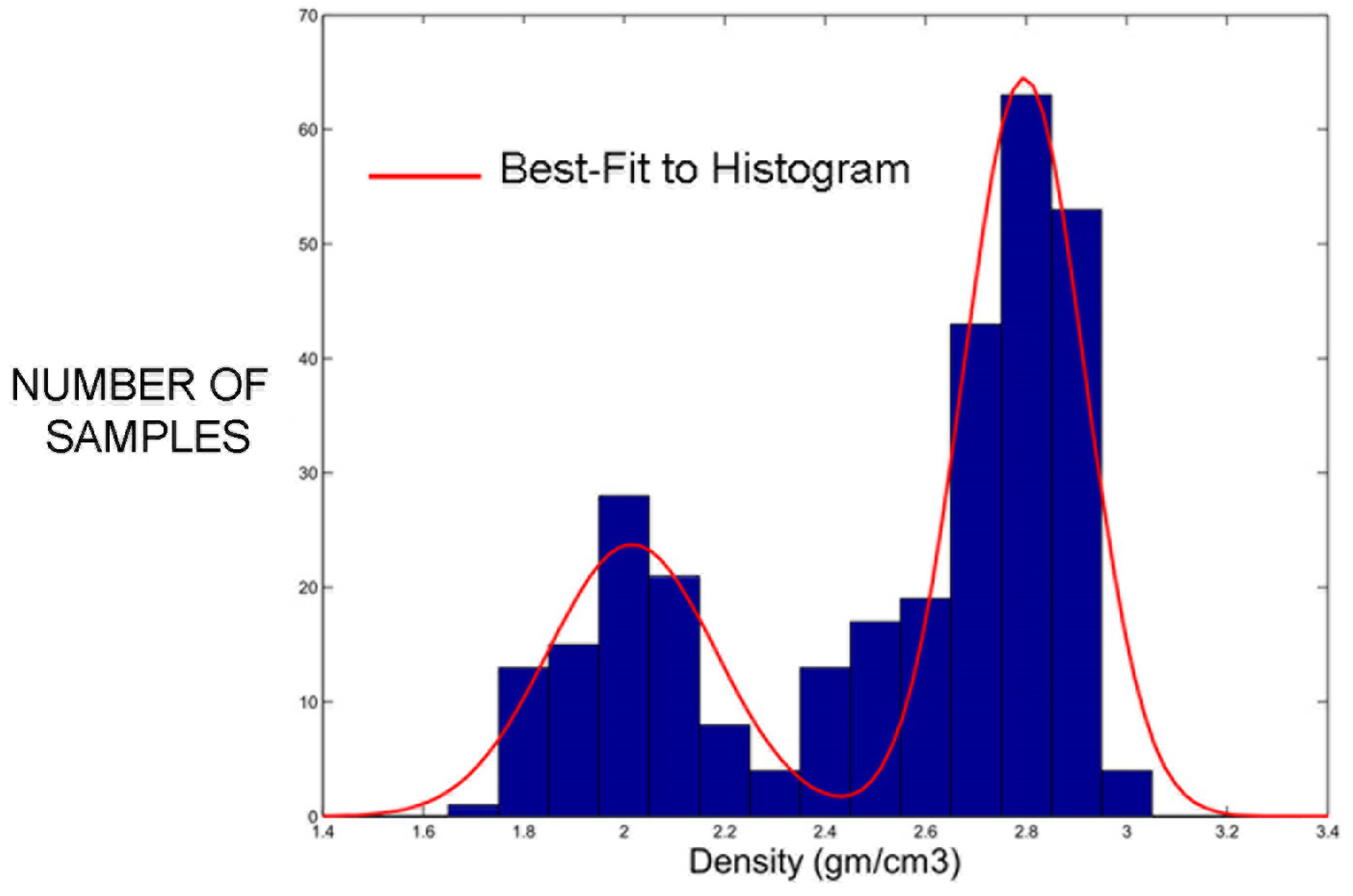
2.2. Area of the Aquifer System
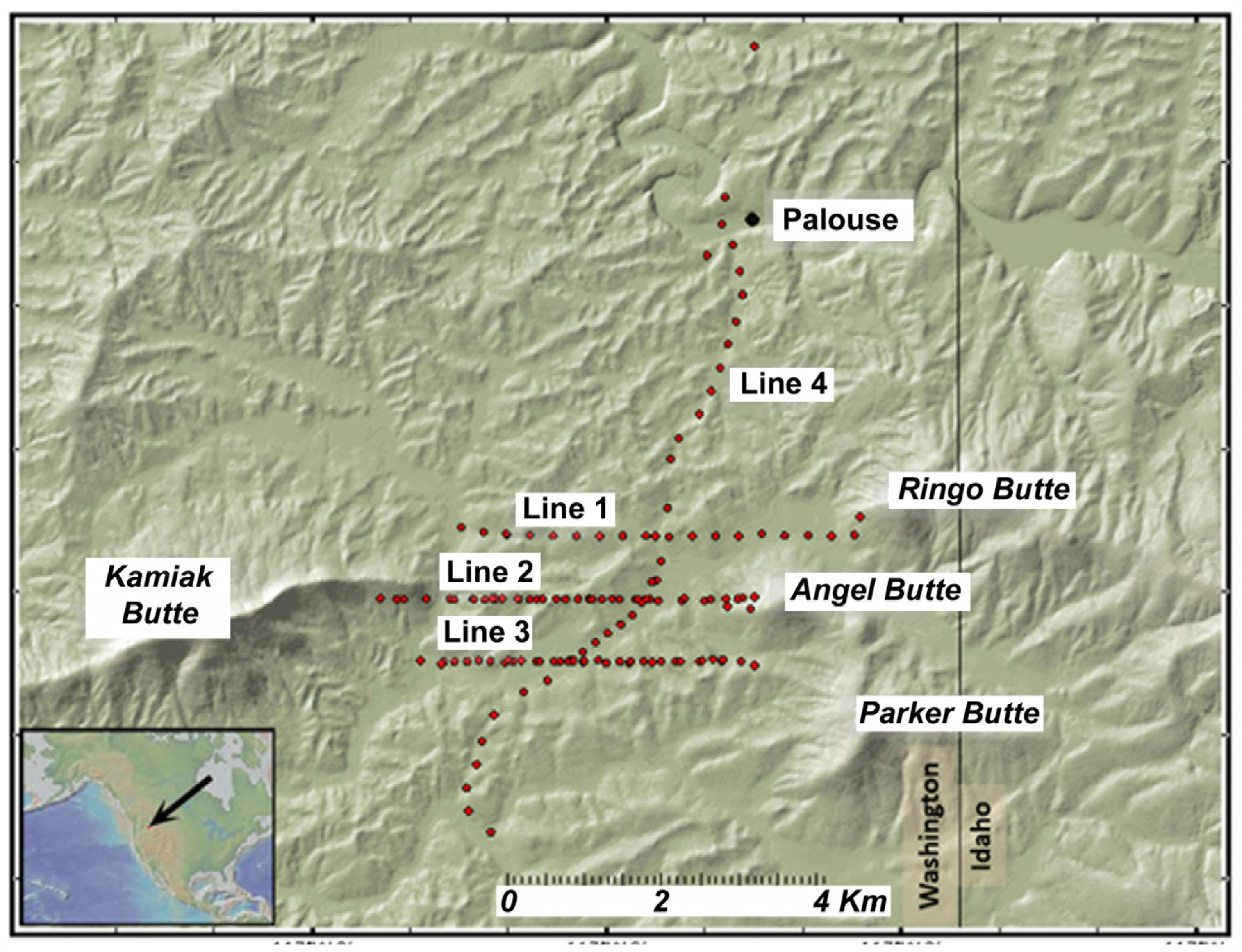
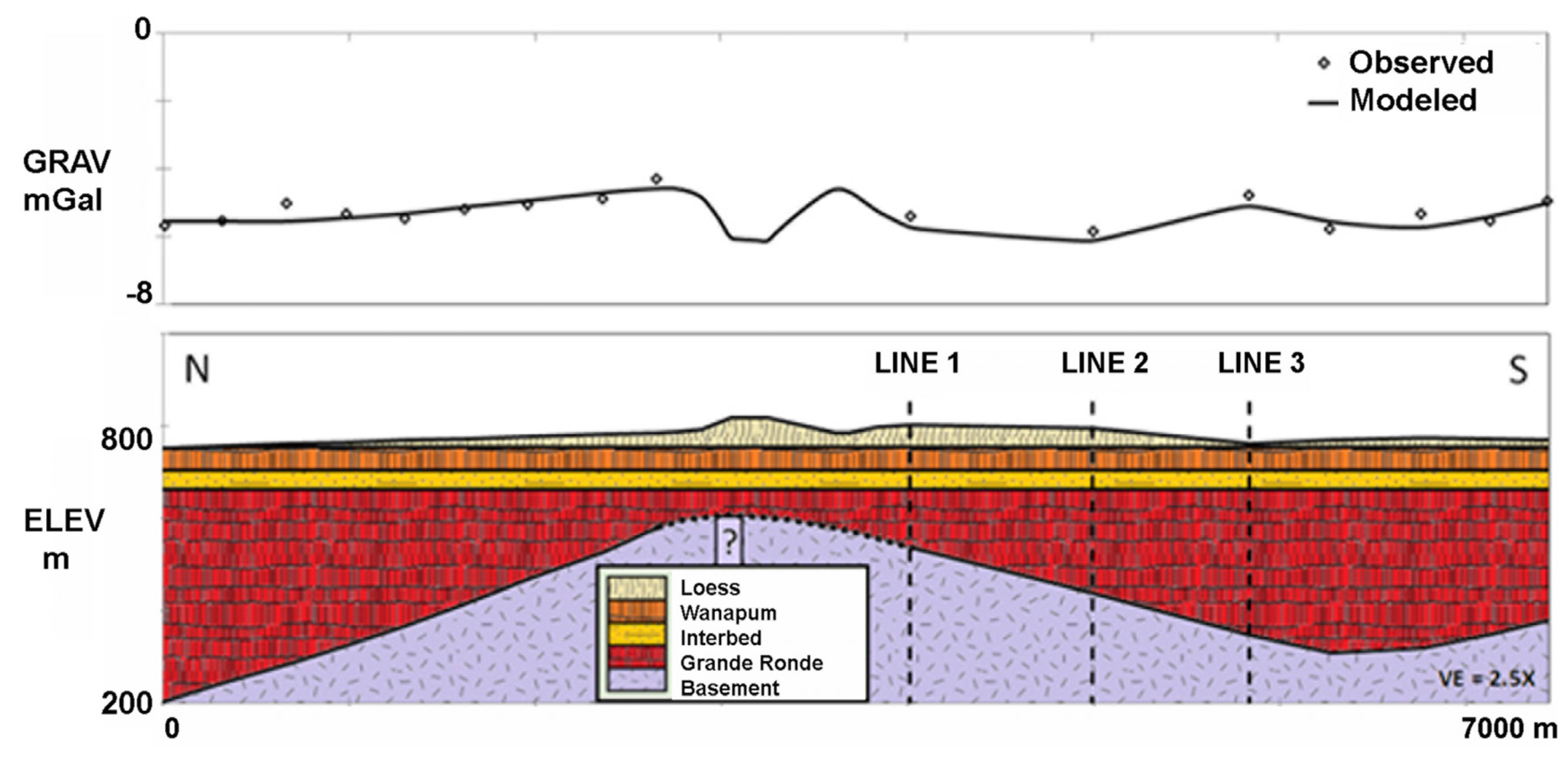
2.3. Thickness of the Aquifer System
2.4. Specific Storage from Barometric Efficiency
2.5. Specific Storage from Earthquake Seismology
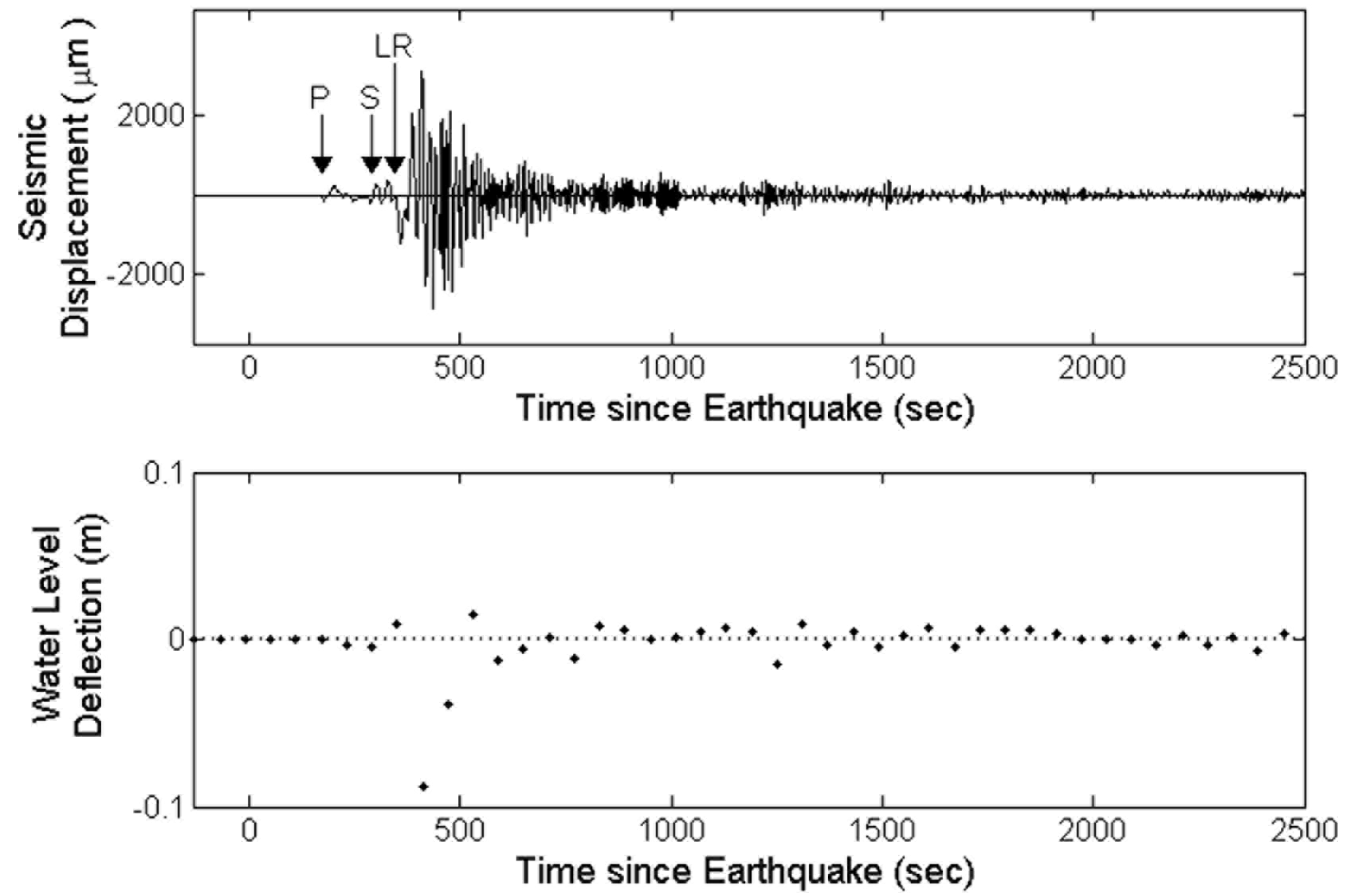
2.6. Specific Storage from Earth Tides
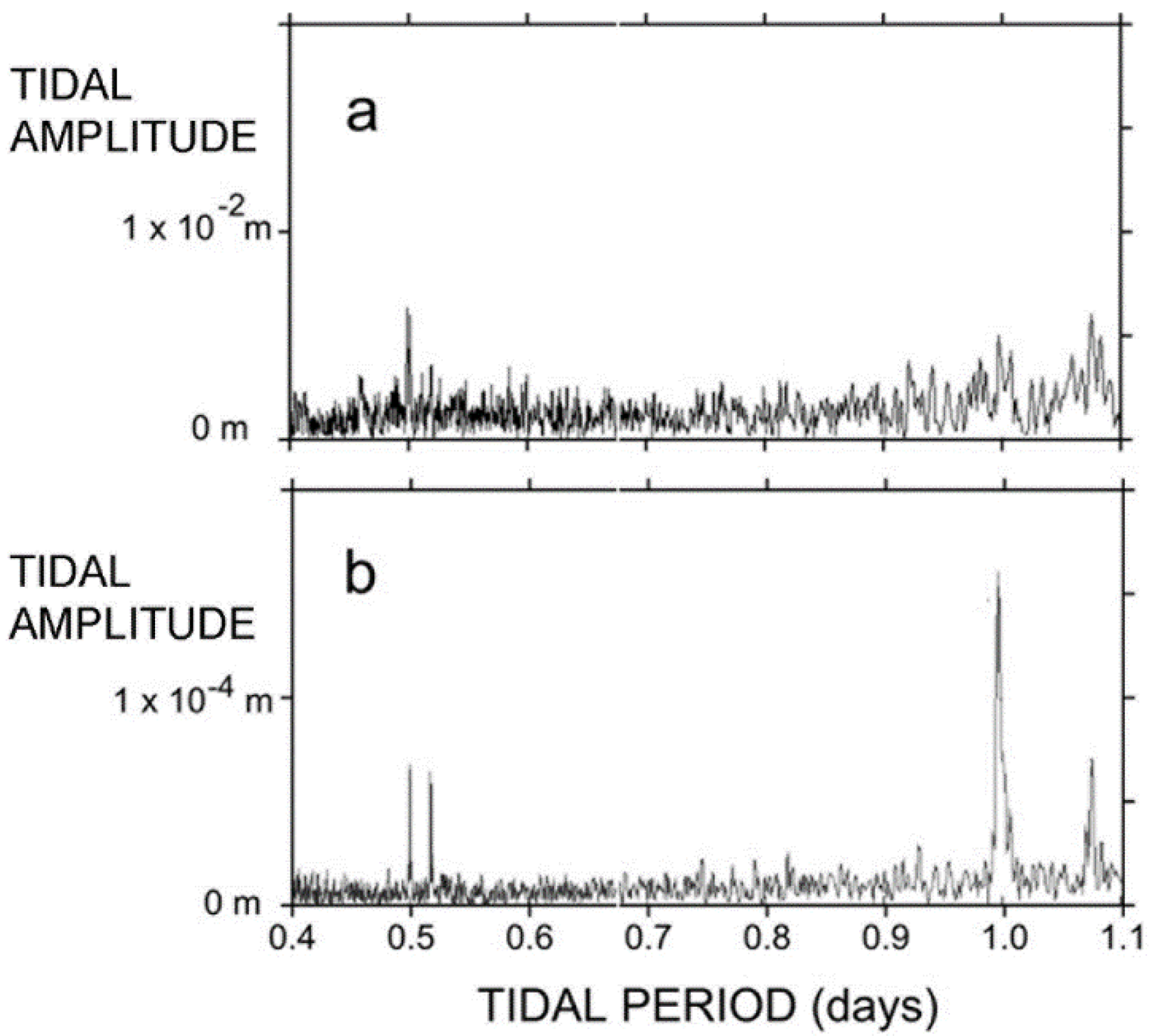
2.7. Pressure State of the Aquifer System
2.8. Storativity of the Aquifer System
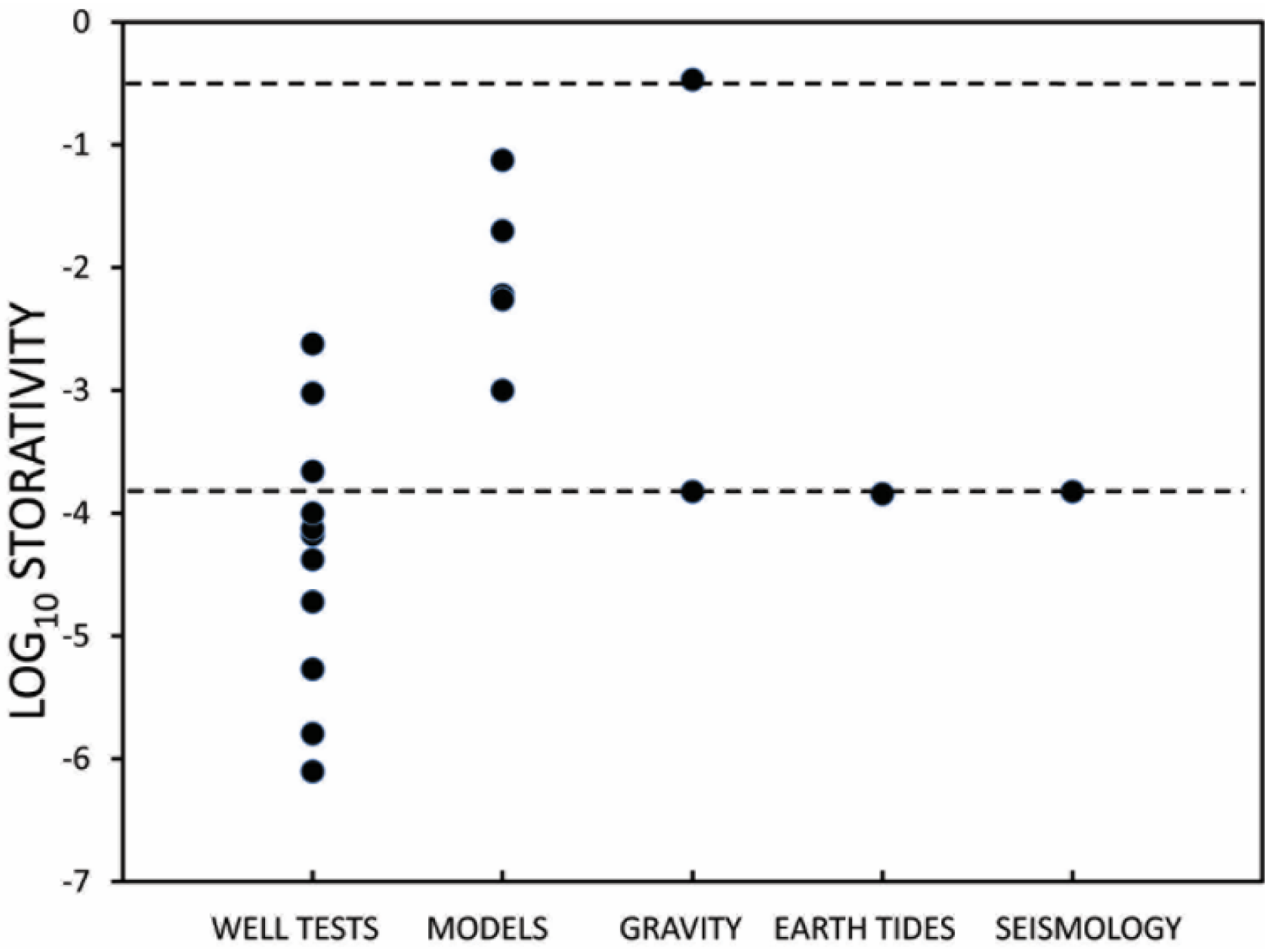
3. Synthesis with Pumpage and Records of Water Level Decline
3.1. Water Budget Model
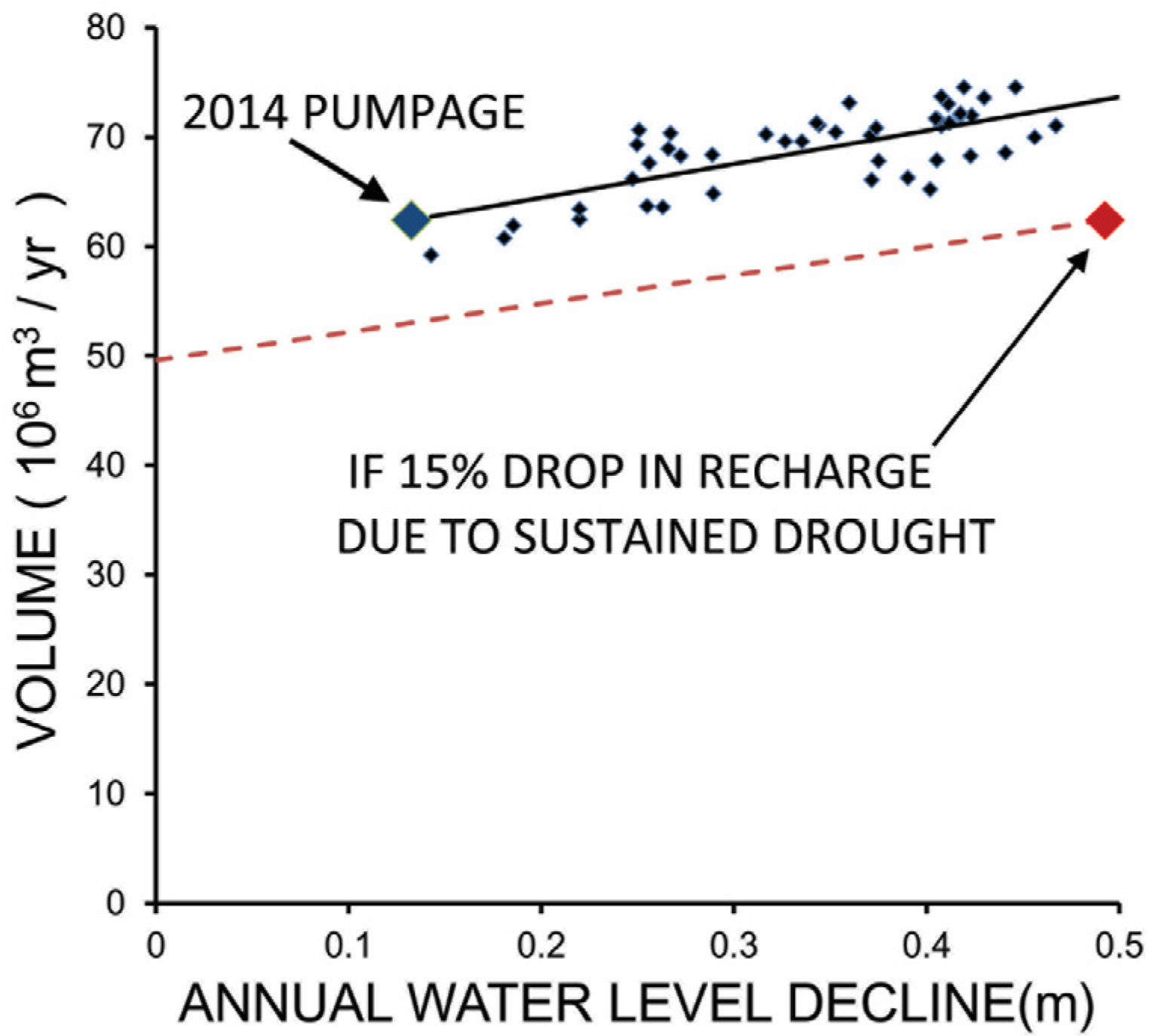
3.2. Model Results
4. Conclusions
Acknowledgments
Conflicts of Interest
References
- U.S. Geological Survey. Ground-Water Availability Assessment for the Columbia Plateau Regional Aquifer System, Washington, Oregon, and Idaho; 2008. Available online: http://pubs.usgs.gov/fs/2008/3086/ (accessed on 22 July 2015).
- Cook, B.I.; Ault, T.R.; Smerdon, J.E. Unprecedented 21st century drought risk in the American Southwest and Central Plains. Sci. Adv. 2015, 1. [Google Scholar] [CrossRef]
- Woodhouse, C.A.; Meko, D.M.; MacDonald, G.M.; Stahle, D.W.; Cook, E.R.A. 1200-year perspective of 21st century drought in southwestern North America. Proc. Natl. Acad. Sci. USA 2010, 107, 21283–21288. [Google Scholar] [CrossRef] [PubMed]
- Pederson, G.T.; Gray, S.T.; Woodhouse, C.A.; Betancourt, J.L.; Fagre, D.B.; Littell, J.S.; Graumlich, L.J. The unusual nature of recent snowpack declines in the North American Cordillera. Science 2011, 333, 332–335. [Google Scholar] [CrossRef] [PubMed]
- Vaccaro, J.J. Potential impacts of climate change on groundwater resources of the Columbia River basin. In Proceedings of the Pacific Northwest Science Conference, Portland, OR, USA, 16 June 2010; pp. 1–18.
- Palouse Basin Aquifer Committee, 2013. Available online: http://www.webpages.uidaho.edu/pbac/ (accessed on 27 February 2015).
- Barker, R.A. Computer simulation and geohydrology of a basalt aquifer system in the Pullman-Moscow basin, Washington and Idaho. Available online: https://fortress.wa.gov/ecy/publications/documents/wsb48 (accessed on 22 July 2015).
- Lum, W.E.; Smoot, J.L.; Ralston, D.R. Geohydrology and numerical model analysis of ground-water flow in the Pullman-Moscow area, Washington and Idaho. Available online: http://pubs.usgs.gov/wri/1989/4103/report.pdf (accessed on 22 July 2015).
- Bauer, H.H.; Hansen, A.J. Hydrogeology of the Columbia Plateau regional aquifer system, Washington, Oregon, and Idaho. Available online: http://pubs.usgs.gov/wri/1996/4106/report.pdf (accessed on 22 July 2015).
- Kahle, S.C.; Olsen, T.D.; Morgan, D.S. Geologic setting and hydrogeologic units of the Columbia Plateau Regional Aquifer System, Washington, Oregon, and Idaho. Available online: http://pubs.usgs.gov/sim/3088/pdf/sim3088.pdf (accessed on 22 July 2015).
- Burns, E.R.; Snyder, D.T.; Haynes, J.V.; Waibel, M.S. Groundwater status and trends for the Columbia Plateau Regional Aquifer System, Washington, Oregon, and Idaho. Available online: http://pubs.er.usgs.gov/publication/sir20125261 (accessed on 22 July 2015).
- U.S. Department of Energy. Site characterization plan, Reference Repository Location, Hanford Site, Washington-consultation draft; Office of Civilian Radioactive Waste Management: Washington, DC, USA, 1988.
- Reidel, S.P.; Fecht, K.R.; Hagood, M.C.; Tolan, T.L. The geologic evolution of the central Columbia Plateau. In Volcanism and Tectonism in the Columbia River flood-Basalt Province; Reidel, S.P., Hooper, P.R., Eds.; Geological Society of America: Washington, DC, USA, 1989. [Google Scholar]
- Drost, B.W.; Whiteman, K.J. Surficial geology, structure, and thickness of selected geohydrologic units in the Columbia Plateau, Washington. Available online: http://pubs.usgs.gov/wri/1984/4326/report.pdf (accessed on 22 July 2015).
- Drost, B.W.; Whiteman, K.J.; Gonthier, J.B. Geologic Framework of the Columbia Plateau Aquifer System, Washington, Oregon, and Idaho. Available online: http://pubs.usgs.gov/wri/1987/4238/report.pdf (accessed on 22 July 2015).
- Steinkampf, W.C.; Hearn, P.P., Jr. Ground-Water Geochemistry of the Columbia Plateau Aquifer System, Washington, Oregon, and Idaho. Available online: http://pubs.usgs.gov/of/1995/0467/report.pdf (accessed on 22 July 2015).
- Vaccaro, J.J. Summary of the Columbia Plateau Regional Aquifer-System Analysis, Washington, Oregon, Idaho. Available online: http://pubs.usgs.gov/pp/1413a/report.pdf (accessed on 22 July 2015).
- Tolan, T.; Lindsey, K.; Porcello, J. A Summary of Columbia River Basalt Group Physical Geology and its Influence on the Hydrogeology of the Columbia River Basalt Aquifer System: Columbia Basin Ground Water Management Area of Adams, Franklin, Grant, and Lincoln Counties, 2009. Available online: http://www.cbgwma.org/pdf/GWMA_Geology-Hydrogeology%20of%20CRBG_TEXT_June%202009.pdf (accessed on 27 February 2015).
- McNab, W.H.; Avers, P.E. Ecological Subregions of the United States. 1996. Available online: http://www.fs.fed.us/land/pubs/ecoregions/ (accessed on 22 July 2015).
- Leek, F. Hydrogeological Characterization of the Palouse Basin Basalt Aquifer System, Washington and Idaho; Washington State University: Pullman, WA, USA, 2006. [Google Scholar]
- Hopster, D. A Recession Analysis of Springs and Streams in the Moscow-Pullman Basin; University of Idaho: Moscow, ID, USA, 2003. [Google Scholar]
- Walters, K.L.; Glancy, P.A. Reconnaissance of Geology and of Ground-Water Occurrences and Development in Whitman County, Washington. Water-Supply Bulletin 26; 1969. Available online: https://fortress.wa.gov/ecy/publications/documents/wsb26.pdf (accessed on 22 July 2015). [Google Scholar]
- Crosby, J.W., III; Chatters, R.M. Water Dating Techniques as Applied to the Pullman-Moscow Ground-Water Basin; Washington State University: Pullman, WA, USA, 1965. [Google Scholar]
- Larson, K.R. Stable Isotopes in the Pullman-Moscow Basin, Eastern Washington and North Idaho: Implications for the Timing, Magnitude, and Distribution of Groundwater Recharge; Washington State University: Pullman, WA, USA, 1997. [Google Scholar]
- Douglas, A.A. Radiocarbon Dating as a Tool for Hydrogeological Investigations in the Palouse Basin; University of Idaho: Moscow, ID, USA, 2004; Available online: http://www.webpages.uidaho.edu/pbac/Theses/Douglas_Thesis_Age_Dating_2004.pdf (accessed on 22 July 2015).
- Carey, L.R. Evaluation of Oxygen and Hydrogen Isotopes in Groundwater of the Palouse Basin and Moscow Sub-Basin; University of Idaho: Moscow, ID, USA, 2011. [Google Scholar]
- Fairley, J.P.; Solomon, M.D.; Hinds, J.J.; Grader, G.W.; Bush, J.H.; Rand, A.L. Latah County Hydrologic Characterization Report. Available online: http://www.researchgate.net/publication/262260160_Latah_County_Hydrogeological_Characterization (accessed on 22 July 2015).
- MacQueen, J.D.; Mann, E. Borehole Gravity Meter Surveys at the Waste Treatment Plant, Hanford, Washington. Available online: http://www.pnl.gov/main/publications/external/technical_reports/PNNL-16490.pdf (accessed on 22 July 2015).
- Moisy, F. Discover Ezyfit: A Free Curve Fitting Toolbox for Matlab. Available online: http://www.mathworks.com/matlabcentral/fileexchange/10176-ezyfit-2-40/content/ezyfit/demo/html/efdemo.html#1 (accessed on 27 February 2015).
- Hyndman, R.D.; Drury, M.J. Physical properties of basalts, gabbros, and ultramafic rocks from DSDP Leg 37. DSDP 1977, 37, 395–401. [Google Scholar]
- Smoot, J.L.; Ralston, D.R. Hydrogeology and Mathematical Model of Ground-Water Flow in the Pullman-Moscow Region, Washington and Idaho; Idaho Water Resources Research Institute, University of Idaho: Moscow, ID, USA, 1987; Available online: http://digital.lib.uidaho.edu/cdm/ref/collection/idahowater/id/310 (accessed on 22 July 2015).
- Moran, K. Evaluation of the relationship between pumping and water level declines in the Grande Ronde Aquifer of the Palouse Basin. Available online: http://www.webpages.uidaho.edu/pbac/Presentations/2011/110915_Moran_WL_Pumping_Relationships_report.pdf (accessed on 22 July 2015).
- Foxworthy, B.L.; Washburn, R.L. Ground Water in the Pullman Area, Whitman County, Washington; Geological Survey Water-Supply Paper 1655; 1963. Available online: http://pubs.usgs.gov/wsp/1655/report.pdf (accessed on 22 July 2015).
- Brown, J.C. Well Construction and Stratigraphic Information: Pullman Test and Observation Well, Pullman, Washington; Washington State University: Pullman, WA, USA, 1976; pp. 1–35. [Google Scholar]
- Teasdale, E.W. Hydrogeologic Basins in the Palouse Area of Idaho and Washington; University of Idaho: Moscow, ID, USA, 2002. [Google Scholar]
- Bush, J.H.; Garwood, D.L. Interpretation and use of well data in the Columbia River Basalt Group, Pullman, Washington. In Proceedings of 2003 Seattle Annual Meeting, Seattle, WA, USA, 2–5 November 2003.
- Bush, J.H. The Columbia River Basalt Group of the Palouse Basin with Hydrological Interpretations, western Latah County, Idaho and eastern Whitman County, Washington; Report to Palouse Basin Aquifer Committee: Moscow, ID, USA, 2005. [Google Scholar]
- Klein, D.P.; Sneddon, R.A.; Smoot, J.L. Magnetotelluric study of the thickness of volcanic and sedimentary rock in the Pullman-Moscow Basin of eastern Washington. Available online: http://pubs.usgs.gov/of/1987/0140/report.pdf (accessed on 22 July 2015).
- Holom, D. Ground Water Flow Conditions Related to the Pre-Basalt Basement Geometry Delineated by Gravity Measurements near Kamiak Butte, Eastern Washington; University of Idaho: Moscow, ID, USA, 2006. [Google Scholar]
- Conrey, R.; Beard, C.; Wolff, J. Columbia River Basalt flow stratigraphy in the Palouse Basin Department of Ecology test wells. Available online: http://www.webpages.uidaho.edu/pbac/pubs/2013_Conrey_Beard_Stratigraphy_in_Palouse_Basin_DOE_test_Wells.pdf (accessed on 22 July 2015).
- Ryan, W.B.F.; Carbotte, S.M.; Coplan, J.O.; O’Hara, S.; Melkonian, A.; Arko, R.; Weissel, R.A.; Ferrini, V.; Goodwillie, A.; Nitsche, F.; et al. Global Multi-Resolution Topography synthesis. Geochem. Geophys. Geosyst. 2009, 10. [Google Scholar] [CrossRef]
- Ducar, S. Properties of the Grande Ronde Aquifer in the Vicinity of Moscow, Idaho from the Synthesis of Aquifer Test Results with Seismic Groundwater Response; Department of Geological Science, University of Idaho: Moscow, ID, USA, 2014. [Google Scholar]
- Moran, K. Interpretation of Long-Term Grande Ronde Aquifer Testing in the Palouse Basin of Idaho and Washington; University of Idaho: Moscow, ID, USA, 2011. [Google Scholar]
- Sokol, D. Interpretation of short term water level fluctuations in the Moscow Basin, Latah County, Idaho. Pamphlet No. 137. 1966. Available online: http://www.idahogeology.org/PDF/Pamphlets_(P)/P-137.pdf (accessed on 22 July 2015).
- Cooper, H.H.; Bredehoeft, J.D.; Papadopulos, I.S.; Bennett, R.R. The response of well-aquifer systems to seismic waves. J. Geophys. Res. 1965, 70, 3915–3926. [Google Scholar] [CrossRef]
- Bredehoeft, J.D. Response of well-aquifer systems to earth tides. J. Geophys. Res. 1967, 72, 3075–3087. [Google Scholar] [CrossRef]
- Shih, D.C.F. Storage in confined aquifer: Spectral analysis of groundwater responses to seismic Rayleigh waves. J. Hydrol. 2009, 374, 83–91. [Google Scholar] [CrossRef]
- Folnagy, A.J.; Osiensky, J.L.; Kobayashi, D.; Sprenke, K.F. Specific storage from sparse records of groundwater response to seismic waves. J. Hydrol. 2013, 503, 22–28. [Google Scholar] [CrossRef]
- Merritt, M.L. Estimating Hydraulic Properties of the Floridan Aquifer System by Analysis of Earth-Tide, Ocean-Tide, and Barometric Effects, Collier and Hendry Counties, Florida. Available online: http://pubs.usgs.gov/wri/wri034267/wri03_4267.pdf (accessed on 22 July 2015).
- Rojstaczer, S.; Riley, F.S. Response of the water level in a well to earth tides and atmospheric loading under unconfined conditions. Water Resour. Res. 1990, 26, 1803–1817. [Google Scholar] [CrossRef]
- Brown, G.; Deacon, R. Economic optimization of a single-cell aquifer. Water Resour. Res. 1972, 8, 557–564. [Google Scholar] [CrossRef]
© 2015 by the authors; licensee MDPI, Basel, Switzerland. This article is an open access article distributed under the terms and conditions of the Creative Commons Attribution license (http://creativecommons.org/licenses/by/4.0/).
Share and Cite
Piersol, M.W.; Sprenke, K.F. A Columbia River Basalt Group Aquifer in Sustained Drought: Insight from Geophysical Methods. Resources 2015, 4, 577-596. https://doi.org/10.3390/resources4030577
Piersol MW, Sprenke KF. A Columbia River Basalt Group Aquifer in Sustained Drought: Insight from Geophysical Methods. Resources. 2015; 4(3):577-596. https://doi.org/10.3390/resources4030577
Chicago/Turabian StylePiersol, Mark W., and Kenneth F. Sprenke. 2015. "A Columbia River Basalt Group Aquifer in Sustained Drought: Insight from Geophysical Methods" Resources 4, no. 3: 577-596. https://doi.org/10.3390/resources4030577
APA StylePiersol, M. W., & Sprenke, K. F. (2015). A Columbia River Basalt Group Aquifer in Sustained Drought: Insight from Geophysical Methods. Resources, 4(3), 577-596. https://doi.org/10.3390/resources4030577




